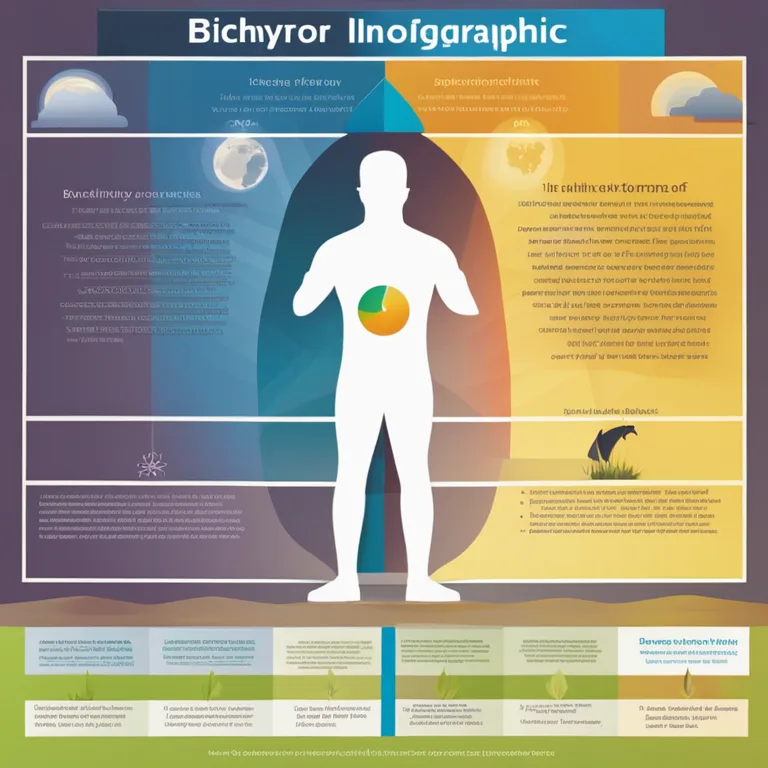
The Biorhythms & Its Interplay In Psychological Well-Being
Delve into the intrinsic link between biorhythms and psychological health, exploring how cycles influence mental and emotional states.
article by Adrian Wallace
Introduction to Biorhythms
In the realm of holistic wellness, biorhythms are often depicted as inherent cycles influencing various aspects of our physiological and psychological states. These rhythms are thought to govern the ebb and flow of our physical, emotional, and intellectual capacities. The theory of biorhythms, which has its origins in the early 20th century, posits that three primary cycles – a 23-day physical, a 28-day emotional, and a 33-day intellectual cycle – synchronize with our life from the moment of birth. Recent studies have expanded upon this framework, examining potential links to various health outcomes and overall well-being. Nonetheless, mainstream psychology often views biorhythmic influences with skepticism, advocating for evidence-based approaches.

Biorhythms and Daily Functioning
Within the psychological landscape of 2024, there is a growing curiosity about the extent to which biorhythms impact daily functioning. Proponents argue that awareness of one's biological cycles can lead to optimized performance and emotional regulation. By aligning tasks with the peaks of respective cycles, individuals seek to maximize output and creativity while minimizing stress and fatigue. Contrarily, periods of low biorhythmic activity might suggest a need for rest or heightened self-care. This approach to personal scheduling and activity planning is supported by a variety of digital tools and applications designed to help monitor and predict individual biorhythms.

Scientific Scrutiny and Biorhythmic Claims
Despite the enthusiasm surrounding biorhythms, scientific scrutiny remains paramount. Research efforts have intensified, aiming to qualitatively measure the effects of these cycles on mental health and cognitive abilities. In controlled studies, psychologists seek to discern patterns and correlations while addressing confounding variables such as lifestyle, environment, and stress levels. This empirical inquiry is critical in distinguishing between the placebo effects of biorhythm-based interventions and genuine psychophysiological patterns that might warrant practical application in mental health practices.

Critical Perspectives in Modern Psychology
As of 2024, contemporary psychology emphasizes critical thinking and empirical evidence, often challenging the foundational premises of biorhythm theory. Critics point to a lack of replicable outcomes and the influence of confirmation bias in self-reported improvements. Moreover, the individual variability in psychological and physiological responses calls into question the universality of the proposed cycles. With the rise of personalized medicine and mental health strategies, there is a concomitant need for a nuanced understanding of the individual differences that may affect how (or if) biorhythms can be meaningfully applied.

Biorhythms in Modern Health Technology
Current advancements in wearable technology and biometric analytics have ushered in new possibilities for tracking and responding to biorhythms. Devices equipped with sensors to monitor physiological markers such as heart rate variability, sleep patterns, and activity levels provide a plethora of data. This data can be analyzed to reveal trends that could correlate with the predicted cycles of biorhythms. Apps tailored for mental wellness incorporate this information to offer personalized advice on managing energy and optimizing cognitive functions, bridging the gap between biorhythm theory and practical, data-driven health support.
Future Outlook on Biorhythms Research
Looking forward, the intersection of biorhythms and psychology holds potential for further investigation. As the debate continues, both sides agree on the need for robust, longitudinal research that can provide clearer insights into the impact of these rhythms. Ultimately, the integration of biorhythmic analysis into psychological practice hinges on the development of a robust empirical foundation. This research will need to transcend anecdotal evidence and account for the complexity of human health and behavior, particularly in the ever-evolving context of mental well-being.
Published: 1/4/2024
Modified: 1/4/2024
More predictions
Come back here soon to learn more about yourself and your future


The Practical Applications of Biorhythms
Delve into the practical applications of biorhythms and discover how they can influence your daily life and personal wellbeing.


Biorhythms Practical Uses Unlocked
Discover the applications of biorhythms in everyday life, from personal well-being to professional optimization.


The Significance of Biorhythm Compatibility
An in-depth analysis of biorhythm compatibility and its impacts on personal relationships. Discover how syncing your biological cycles can enhance connections.